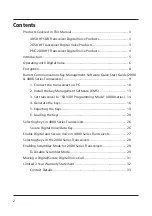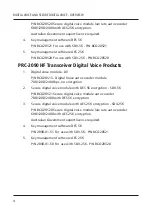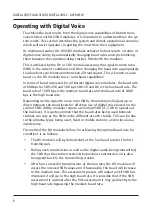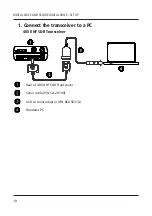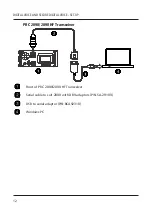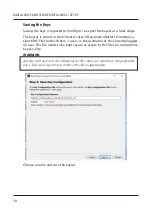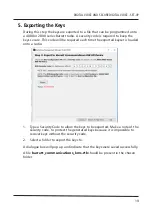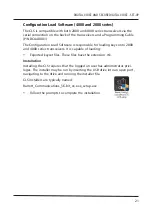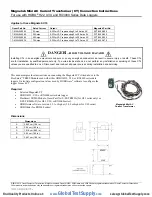
6
DIGITAL VOICE AND SECURE DIGITAL VOICE - OVERVIEW
Operating with Digital Voice
To achieve the best results from the digital voice capabilities of Barrett trans-
ceivers fitted with DV/SDV modules, it is important to understand how the sys-
tem works. This section describes the system and details operational scenarios
which will assist operators in getting the most from their equipment.
As mentioned earlier, the DV/SDV modules achieve the best results in terms of
digital voice clarity by automatically changing baud rates and synchronizing
them between the communicating stations fitted with the modules.
This is achieved by the DV or SDV module assessing the signal-to-noise ratio
(SNR) in the current conditions and then changing the baud rate appropriately
to allow best synchronization between all transceivers. This is known as auto
baud i.e. the DV modules have “auto baud capabilities”.
In terms of baud rate levels for all Barrett digital voice modules, the baud rate
of 600bps for SDV-256 and 700 bps SDV-56 and DV is the low baud rate. The
baud rate of 1200 bps is the medium baud rate and the baud rate of 2400
bps is the high baud rate.
Depending on the signal to noise ratio (SNR), the module will adjust up or
down between the baud levels for effective use of digital voice based on the
current SNR. All the modules require a minimum SNR of -3 dB to operate at
the low level. It is quite common that the baud rates being used between
stations can vary as the SNR can be different at each station. This can be due
to the antenna types being used, fixed or mobile stations, and/or local area
interference.
The method the DV modules follow for achieving the optimal baud rate for
conditions is as follows:
•
The DV modules will by default start at the low baud rate for the first
transmission.
•
During each transmission as well as the digital audio being transmitted,
the SNR that the station received the previous transmission on is also
being sent back to the transmitting station.
•
After four successful transmissions at the low rate, the DV module will
assess the received SNR values and if favourable, the baud will increase
to the medium rate. This assessment process will repeat and if SNR has
improved it will go to the high baud rate. It is possible that if the SNR
assessment is optimal after the first assessment it may go directly to the
high baud rate bypassing the medium baud rate.


